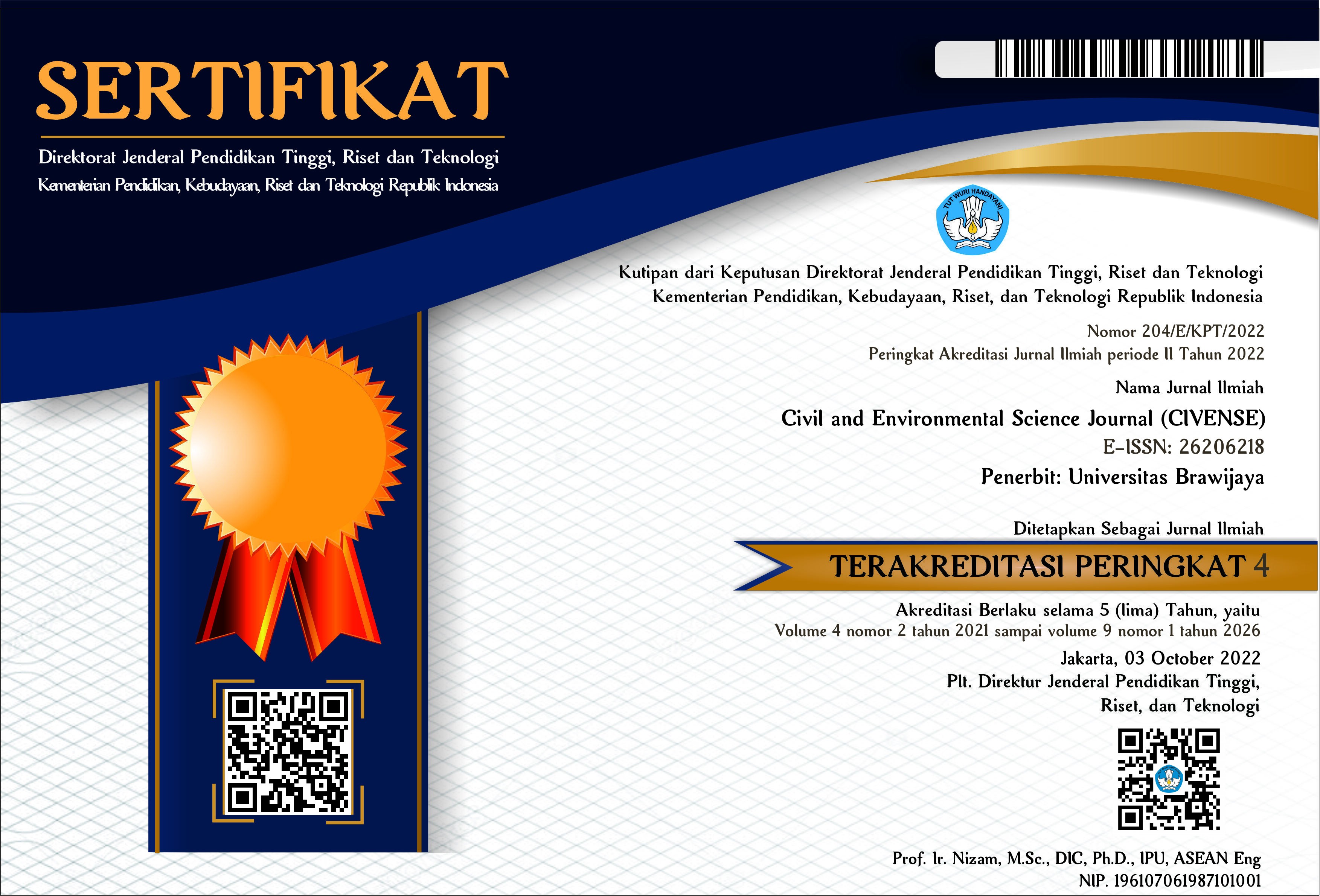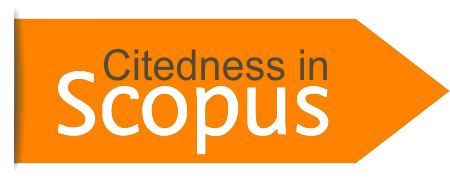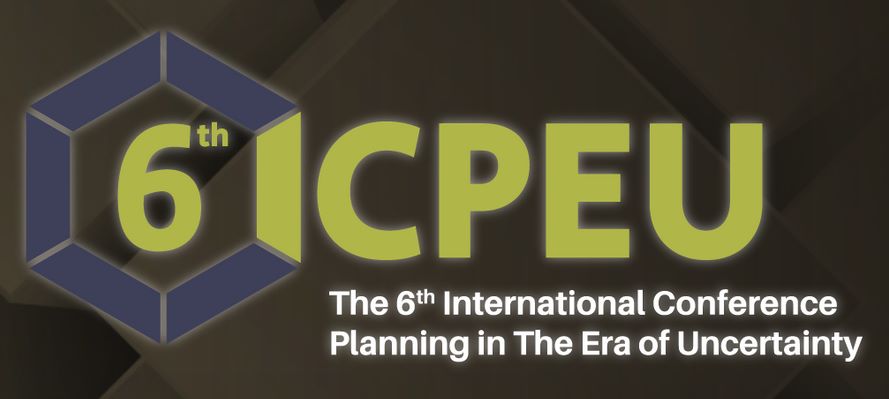Rainwater Quality Improvement Model as an Alternative Source for Drinking Water in Mojoagung District, Jombang Regency
DOI:
https://doi.org/10.21776/ub.civense.2022.00502.1Keywords:
Filtration, KMnO4 , Rainwater harvesting, WaterAbstract
Water is a basic need for humans, yet often the quality and quantity become cronstrained as happened in Mojoagung District, Jombang Regency. During the dry season, the potential for water reserves available for use is rainwater that has been stored. Based on laboratory tests, the quality of the stored rainwater is below the quality standard due to its high KMnO4 (Calium Permanganate) content. Hence we need a simple filter to improve the water quality. Researchers have conducted experiments with the filter composition of zeolite, activated charcoal, activated sand, sterile cotton, and aquarium filter. The results of the filtration process showed a significant decrease in potassium permanganate. The filtration results from the filter with the composition of zeolite, activated charcoal, activated sand, sterile cotton, and an aquarium filter sequentially 5 cm, 10 cm, 15 cm, 4 cm, and 2 cm succeeded in reducing potassium permanganate levels from 11.73 to an average of 2.12 mg. /l. The best filter due to experimental activities will be integrated with rainwater harvesting structure system which has been discussed along with related social community and stakeholders.
References
World Health Organization. 2000. The World Health Report 2000 - Health Systems: Improving Performance. World Health Organization Assesses The World's Health Systems.
Untari, T., & Kusnadi, J. 2015. Pemanfaatan Air Hujan Sebagai Air Layak Konsumsi Di Kota Malang Dengan Metode Modifikasi Filtrasi Sederhana. Jurnal Pangan dan Agroindustri Vol. 3 No 4 p.1492-1502, September 2015.
https://kabarjombang.com/enam-kecamatan-di-jombang-terancam-kekeringan-bpbd-luas-dan-jarak-jadi-kendala-penanggulangan/, accessed on 11 Desember 2020
https://surabaya.tribunnews.com/2020/03/01/komunitas-air-kita-di-desa-karangwinongan-jombang-beri-edukasi-tentang-manfaat-air-hujan, accessed on 11 Desember 2020).
Peraturan Menteri Kesehatan RI No. 492/ MENKES/ PER/ IV/ 2010 tentang peryaratan kualitas air minum.
Sudarmadji, 1975. Analisa Unit Kualitas Airtanah di Daerah Aliran Kali Serayu. Skripsi Sarjana Fakultas Geografi UGM, Yogyakarta.
Sudarmadji, 1995. Beberapa Aspek Hidrokimia Hutan Pinus. Majalah Geografi Indonesia No. 16 Tahun 10. September 1995. (Dalam Penerbitan).
Sudarmadji. 1997. Perbandingan Kualitas Air Hujan di Kotamadya Yogyakarta dan Daerah Perdesaan Sekitarnya. Universitas Gajah Mada, Yogyakarta.
Asma Irma Setianingsih. 1989. Kualitas Air Hujan di Parangtritis sampa Puncak Gunungapi Merapi dan Faktor – Faktor yang Mempengaruhinya. Skripsi Sarjana Program S1. Fakultas Geografi UGM, Yogyakarta.
Satriawan, D., 2018. Analisis kuantitatif acidity level sebagai indikator kualitas air hujan di Kabupaten Cilacap. Jurnal Rekayasa Sistem Industri, 3(2), pp.112-116.
PN Jombang (pn-jombang.go.id). 2022
Davis, M.L., 2010. Water and wastewater engineering: design principles and practice. McGraw-Hill Education.
Downloads
Published
How to Cite
Issue
Section
License
Copyright (c) 2022 Galih M Fatian -, Hari Siswoyo, Riyanto Haribowo

This work is licensed under a Creative Commons Attribution-NonCommercial 4.0 International License.
Authors who publish with this journal agree to the following terms:
Authors retain copyright and grant the journal right of first publication with the work simultaneously licensed under a Attribution-NonCommercial 4.0 International License that allows others to share the work with an acknowledgement of the work's authorship and initial publication in this journal.
Authors are able to enter into separate, additional contractual arrangements for the non-exclusive distribution of the journal's published version of the work (e.g., post it to an institutional repository or publish it in a book), with an acknowledgement of its initial publication in this journal.
Authors are permitted and encouraged to post their work online (e.g., in institutional repositories or on their website) prior to and during the submission process, as it can lead to productive exchanges, as well as earlier and greater citation of published work (See the Effect of Open Access).














